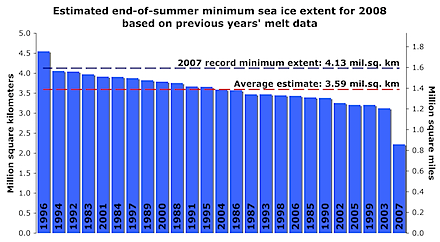 You’re a senior New Zealand climate scientist. You shared in the Nobel Peace Prize awarded to the IPCC last year. As a young scientist in the 1970s you did ground-breaking work on warming in New Zealand, and wrote a seminal paper in Nature pointing out that cooling experienced in the northern hemisphere might be due to aerosols. You wrote the first book on what global warming might mean for New Zealand. And then your name appears on a list of “500 Scientists with Documented Doubts of Man-Made Global Warming Scares” published by the Heartland Institute. Would you not be a trifle irritated?
You’re a senior New Zealand climate scientist. You shared in the Nobel Peace Prize awarded to the IPCC last year. As a young scientist in the 1970s you did ground-breaking work on warming in New Zealand, and wrote a seminal paper in Nature pointing out that cooling experienced in the northern hemisphere might be due to aerosols. You wrote the first book on what global warming might mean for New Zealand. And then your name appears on a list of “500 Scientists with Documented Doubts of Man-Made Global Warming Scares” published by the Heartland Institute. Would you not be a trifle irritated?
Jim Salinger (for it is he! – excellent Herald profile here) and four other NZ scientists who found their way on to the Heartland list issued their response last night (pers comm):
The five scientists concerned are Associate Professor Chris Hendy (University of Waikato), Dr Matt McGlone (Science Team Leader, Landcare Research), Dr Neville Moar (retired DSIR,), Dr Jim Salinger (Principal Scientist, NIWA) and Dr Peter Wardle (retired DSIR, FRSNZ). Other eminent scientists around the world, also included in the list of 500, have publically distanced themselves from the Heartland statement. While the Heartland Institute is entitled to make what it will of their research, these scientists strongly object to the implication that they support Heartland’s position. The scientists fully endorse the findings of the Intergovernmental Panel on Climate Change (IPCC) as to global warming and its causes.
There’s good coverage by Angela Gregory in the Herald this morning, plus Hard News & Stuff, and Morning Report has an interview (6:16am, podcast available), including a remarkable effort by Owen Mcshane of the NZCSC to defend the list. DeSmogBlog broke the story about the Heartland list, and has been documenting the reaction from scientists on it. Meanwhile, the Heartland Institute has made a small change to the heading of the list, but refuses to remove it from their web site.
This is the same Heartland Institute whose President, Joseph L Bast, sent a letter to The Listener (scroll down this page) demanding that Dave Hansford stop writing about climate. He wrote:
I don’t know how writers like Hansford sleep at night. If he has even a shred of personal integrity, he should apologise for his attacks on the growing number of scientists who say the threat of global warming has been over-sold, and promise to never again write on this subject. And his publisher should accept nothing less.
Bast defends his actions over the list in equally bombastic fashion (here):
Many of the complaining scientists have crossed the line between scientific research and policy advocacy. They lend their credibility to politicians and advocacy groups who call for higher taxes and more government regulations to “save the world†from catastrophic warming … and not coincidentally, to fund more climate research. They are embarrassed — as they should be — to see their names in a list of scientists whose peer-reviewed published work suggests the modern warming might be due to a natural 1,500-year climate cycle.
Well, Mr Bast, I’ve got news for you. The embarrassment should be yours. You are happy to claim the moral high ground when making thinly-veiled attempts to get rid of a journalist prepared to point out the inconvenient truth about your organisation and its funding of sceptics in NZ and around the world. But when you professionally smear a group of respected scientists – and then deepen the smear by questioning their ethics – you cross the line from advocacy to desperate defamation. To coin a phrase, you should apologise for your attacks on respected scientists, and promise to never again write on this subject. And stay out of New Zealand.
But I’m not holding my breath.
(Hat tips to JS, cindy, Deltoid, International Journal of Inactivism)
Like this:
Like Loading...
 John Key has announced that National will not support the Emissions Trading Scheme legislation in its current form [Stuff]. When the select committee reports back to parliament next month, National will vote against a second reading. The reactions are as you might expect: from praise at Kiwiblog to righteous indignation at No Right Turn. Hot Topic (for what it’s worth) is disappointed that climate policy is effectively becoming a political football. Key’s move doesn’t mean that the ETS is dead, but it does radically change the political landscape on climate issues. Helen Clark is insisting the ETS will proceed, but she will now need to ensure that the Greens and Maori Party are on side, and rustle up some votes from New Zealand First and/or United Future. Good luck with that.
John Key has announced that National will not support the Emissions Trading Scheme legislation in its current form [Stuff]. When the select committee reports back to parliament next month, National will vote against a second reading. The reactions are as you might expect: from praise at Kiwiblog to righteous indignation at No Right Turn. Hot Topic (for what it’s worth) is disappointed that climate policy is effectively becoming a political football. Key’s move doesn’t mean that the ETS is dead, but it does radically change the political landscape on climate issues. Helen Clark is insisting the ETS will proceed, but she will now need to ensure that the Greens and Maori Party are on side, and rustle up some votes from New Zealand First and/or United Future. Good luck with that.



